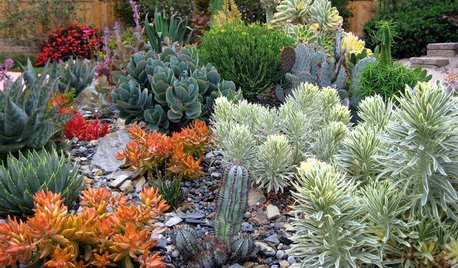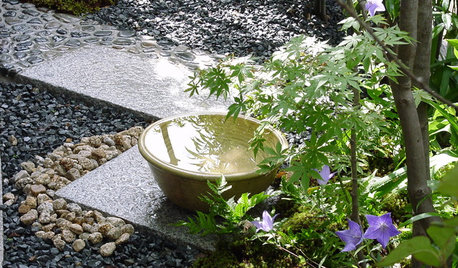Best way to get into hydroculture for a beginner?
CapnKate
10 years ago
Related Stories

GARDENING GUIDESA Beginner’s Guide to Growing Succulents
Their easy-care reputation is well-deserved, but a little TLC will turn succulents into star plants
Full Story
WORKING WITH PROSA Beginner’s Guide to Managing a Remodel
How do you make your design dream a reality? Here’s some project management know-how to help you work with your designer
Full Story
LIGHTINGA Beginner’s Guide to Lighting in Layers
Discover the secrets of combining light sources to create richer-looking and more flexible living spaces
Full Story
WORLD OF DESIGNA Beginner’s Guide to the Japanese Tea Garden
A small roji, or teahouse garden, offers a respite from everyday life. Why not make one part of your home garden?
Full Story
GARDENING GUIDES10 Tips to Start a Garden — Can-Do Ideas for Beginners
Green up your landscape even if you're short on time, money and knowledge, with these manageable steps for first-time gardeners
Full Story
DECORATING GUIDESA Beginner's Mini Guide to Buying Antiques
Experience the thrill of the hunt without ignorance ruining the spoils, with this guide to antiquing for novice buyers
Full Story
ARTCollect With Confidence: An Art-Buying Guide for Beginners
Don't let a lack of knowledge or limited funds keep you from the joy of owning art. This guide will put you on the collector's path
Full Story
CHRISTMASMake a Traditional Fresh Holiday Wreath the Easy Way
Even beginners can follow these simple steps, layering greenery and bright berries to create a beautiful holiday welcome
Full Story
ARTShow News: Rare Quilts Get Museum Time
See 6 intricate designs from a California exhibition and get tips for building your own quilt collection
Full Story
DECORATING GUIDESHow to Get Your Window Treatment Right
Here's the lingo to know to get the draperies you really want
Full Story






PupillaCharites
PupillaCharites
Related Professionals
Simpsonville Landscape Architects & Landscape Designers · Accokeek Landscape Architects & Landscape Designers · Essex Landscape Architects & Landscape Designers · Finneytown Landscape Architects & Landscape Designers · Cambridge Landscape Contractors · East Chicago Landscape Contractors · Federal Way Landscape Contractors · Forest Hills Landscape Contractors · Gallatin Landscape Contractors · Lemay Landscape Contractors · Red Oak Landscape Contractors · Wareham Landscape Contractors · Whitehall Landscape Contractors · Yukon Landscape Contractors · North Hills Landscape Contractorscole_robbie
nil13
Happy.420
PupillaCharites
cole_robbie
grizzman
PupillaCharites